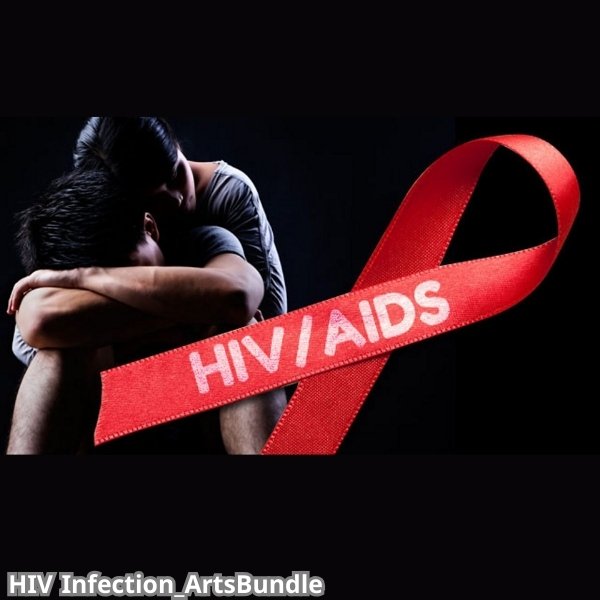HIV infection is a significant health issue that can sometimes show mild symptoms that might be overlooked. Identifying the virus early is essential for successful treatment and to help prevent spreading it to others. In this article, we will discuss seven typical symptoms linked to the early stages of HIV infection. Being aware of these indicators can encourage you to get prompt medical attention and take important measures to safeguard your health.
What Is HIV?

It is a virus that targets the immune system, particularly the CD4 cells, which are also known as T-helper cells. As it gradually diminishes the body’s immune defenses, individuals become more susceptible to opportunistic infections and certain cancers.
Key Characteristics of HIV infection
- Transmission: It is transmitted through specific bodily fluids, including blood, semen, vaginal secretions, rectal fluids, and breast milk.
- Infection Stages:
- Acute HIV Infection: This initial phase often presents flu-like symptoms within 2 to 4 weeks after exposure.
- Chronic HIV Infection: Known as clinical latency, this stage can persist for several years without any obvious symptoms.
- Advanced HIV (AIDS): This stage is marked by a severely compromised immune system, indicated by a CD4 count of fewer than 200 cells/mm³.
What Is AIDS?
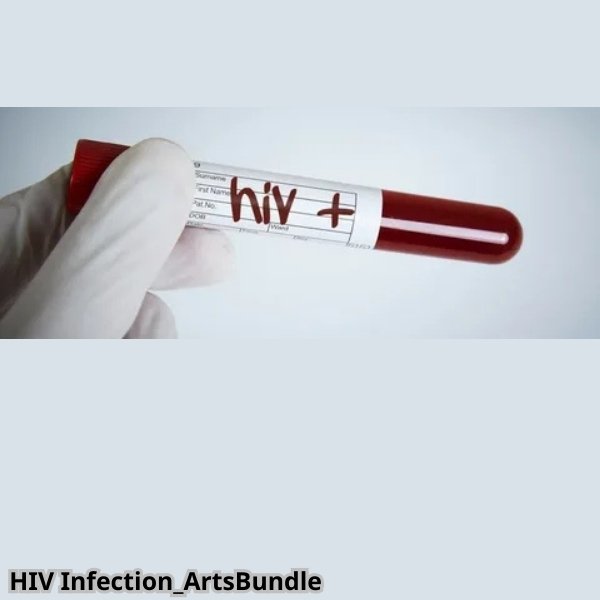
AIDS represents the advanced stage of HIV infection. It happens when the immune system is significantly compromised, making it difficult for the body to resist diseases and illnesses.
Symptoms of AIDS

There are many symptoms of AIDS including:
• Significant weight loss
• Frequent fevers or night sweats
• Severe fatigue
• Ongoing swollen lymph nodes
• Extended periods of diarrhea
• Opportunistic infections like pneumonia or tuberculosis
How HIV is Transmitted
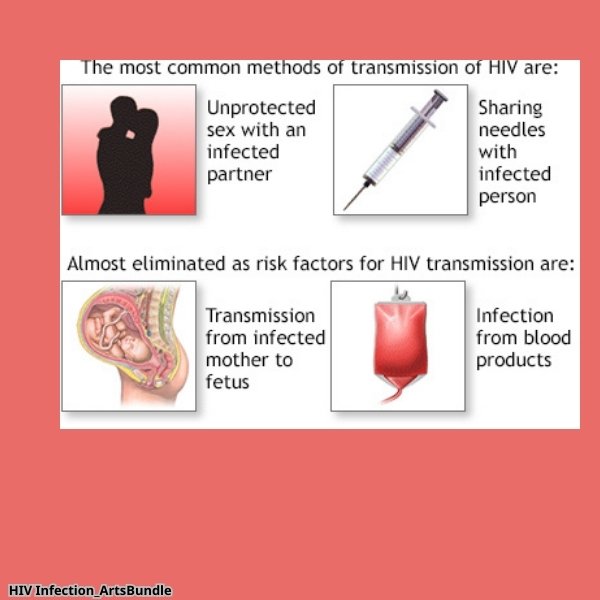
It is mainly transmitted through:
- Sexual activity: Engaging in unprotected sex with someone who is infected.
- Blood contact: Sharing needles or receiving blood products that are contaminated.
- Transmission from mother to child: This can occur during pregnancy, childbirth, or breastfeeding.
- Other bodily fluids: Including vaginal secretions, semen, and breast milk.
It’s important to note that it is not transmitted through casual interactions like hugging, sharing meals, or kissing.
Symptoms of HIV infection
The signs of it can differ depending on the stage of the infection. The virus is more easily transmitted during the initial months after someone becomes infected, yet many individuals remain unaware of their condition until later.
In the early weeks post-infection, some may not show any symptoms, while others might experience flu-like symptoms such as:
- Fever.
- Headache.
- Rash.
- Sore throat.
As the HIV infection advances, it gradually weakens the immune system, leading to additional signs and symptoms like:
- Swollen lymph nodes.
- Weight loss.
- Fever.
- Diarrhea.
- Cough.
If left untreated, those with it can face serious health issues, including:
- Tuberculosis (TB).
- Cryptococcal meningitis.
- Severe bacterial infections.
- Cancers like lymphomas and Kaposi’s sarcoma.
HIV infection can also exacerbate other infections, such as hepatitis C, hepatitis B, and mpox.
This virus is frequently associated with “opportunistic infections,” which include:
- Kaposi’s sarcoma (KS), is a form of skin cancer.
- Candida, an infection that can affect the throat and vagina.
- Cytomegalovirus (CMV), which typically impacts the eyes.
- Pneumocystis pneumonia is a lung infection.
These symptoms generally appear between 1 to 4 weeks after infection. Usually, HIV antibodies start to form within 25 days following the infection. However, it typically takes about three months for these antibodies to be reliably detected.
If you notice these symptoms, seeking an early diagnosis and prompt treatment is crucial. This can significantly help in managing the virus, preventing severe complications, and stopping the progression of AIDS.
Stages of human immunodeficiency virus infection
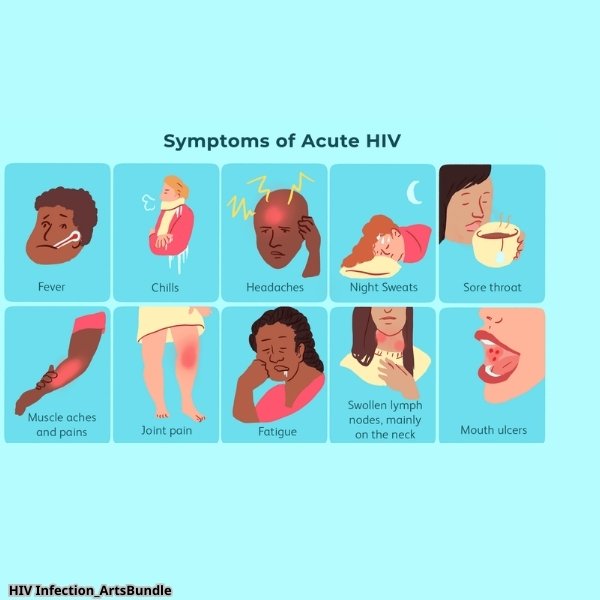
Human Immunodeficiency virus infection undergoes several stages, each accompanied by different symptoms, including:
● The first stage is the acute infection stage. This stage is considered the initial stage of the virus, with symptoms that are similar to those of influenza, and may last for a short period of two to four weeks. The symptoms that may appear in the first stage include mouth ulcers, sore throat, fever, muscle and joint pain, sweating during sleep, and chills.
● The second stage, which does not show any symptoms, is called chronic infection. In this stage, most of the symptoms from the previous stage may disappear, and the person may feel a noticeable change. As mentioned, this stage does not show any symptoms, but the virus is still active and continues to spread to people who do not receive antiviral treatment.
● The third stage is the most difficult and severe stage of HIV, and it is the most dangerous because the immune system becomes significantly weakened if the infected person does not receive any treatment. The virus progresses to the AIDS stage, where the concentration of the virus is very high, making it highly contagious and potentially leading to death. Therefore, AIDS is a disease in which the immune system is extremely weak, making individuals more susceptible to any type of disease.
HIV Testing and Diagnosis

Diagnosis:
AIDS is identified when an individual with HIV experiences certain opportunistic infections or when their CD4 cell count falls below 200 cells per microliter.
Early testing plays a vital role in effectively managing HIV infection. It is the sole method to verify if the virus is present in the body. Here are some common testing methods:
• Antibody Tests: These tests look for HIV antibodies in blood or oral fluids.
• Combination Tests (4th Generation): These tests can detect both antibodies and antigens.
• Nucleic Acid Tests (NATs): These tests identify the virus directly and are often used for early detection.
Regular testing is advised for those who engage in high-risk behaviors or reside in regions with a high prevalence of HIV.
HIV and AIDS Treatment
While there is currently no cure for AIDS, antiretroviral therapy (ART) enables individuals to effectively manage the virus and enjoy long, healthy lives.
Essential Elements of Treatment:
• ART Regimens: A combination of medications that lower the virus to undetectable levels in the bloodstream.
• Adherence is Crucial: Missing doses can result in drug resistance.
• Ongoing Monitoring: Regular tests for CD4 count and viral load help assess treatment success.
HIV Infection Prevention Methods
HIV infection can be completely prevented through a mix of behavioral, biomedical, and structural strategies:
1. Behavioral Strategies
• Condoms: Using condoms consistently greatly lowers the chances of transmission.
• Education: Providing thorough sexual education enhances understanding and minimizes risky behaviors.
2. Biomedical Strategies
• Pre-exposure prophylaxis (PrEP): Taking daily oral medications or long-acting injections can help prevent it in those at higher risk.
• Post-Exposure Prophylaxis (PEP): Medications taken within 72 hours after potential exposure can stop the virus from taking hold in the body.
3. Mother-to-Child Prevention
Without treatment, a pregnant woman has a 15–45% chance of transmitting it to her child. However, with effective antiretroviral therapy (ART), this risk can be reduced to under 5%.
Read also: Discover the Best Hair Loss Treatment for Stunning Results in 2024
Advances in HIV Treatment
Antiretroviral therapy (ART) is the foundation of effective HIV management. By suppressing the virus, ART helps maintain undetectable levels in the bloodstream. This not only enhances the quality of life for individuals living with it but also completely removes the risk of transmitting the virus to others.
Treatment Coverage and Challenges
Worldwide, approximately 85% of individuals with HIV infection are aware of their status, and 76% are receiving ART. However, there are still significant gaps:
• Only 66% of children diagnosed with HIV infection are receiving treatment.
• Some areas, like the Western Pacific, are experiencing increasing rates of infection and mortality, despite global initiatives aimed at eradicating the epidemic by 2030.
The Future of HIV/AIDS Prevention and Treatment
The global battle against HIV/AIDS relies on innovation and inclusivity. Future objectives include:
• Increasing access to PrEP and ART, particularly in underserved communities.
• Advancing vaccine research to ensure long-term protection.
• Tackling social determinants of health, such as stigma and discrimination, which obstruct prevention and treatment efforts.
Global Impact of HIV infection and AIDS
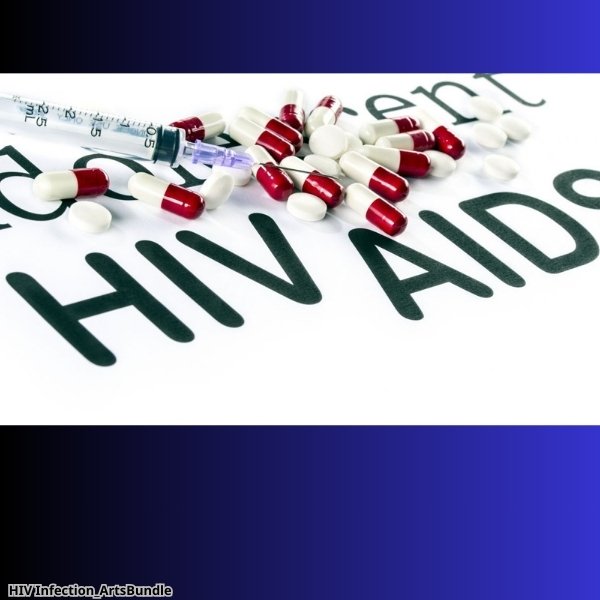
Since HIV infection was identified in the 1980s, more than 38 million people around the globe are currently living with the virus. Although effective treatments have decreased the death rate, stigma, limited healthcare access, and misinformation continue to pose major challenges.
Key Figures:
• More than 1.5 million new infections happen each year.
• Nearly 70% of global cases are found in Sub-Saharan Africa.
• Women and marginalized communities are disproportionately impacted.
Early detection and treatment of HIV infection is essential for living a longer and healthier life. By being aware of the initial symptoms and consulting a healthcare professional without delay, individuals can empower themselves to manage their health effectively and lower the chances of complications. Keep in mind that with the right medical support and lifestyle changes, HIV can be effectively managed.
Can a person with HIV live a normal life?
Absolutely. With advancements in medical treatment, people living with it can enjoy long and fulfilling lives. Adhering to prescribed medication, maintaining a healthy lifestyle, and regular medical check-ups are essential for managing the condition effectively.
What to avoid when HIV is positive?
Unprotected Sex: Engaging in unprotected sex can increase the risk of transmitting HIV to others.
· Substance Abuse: Substance abuse can weaken the immune system and interfere with HIV treatment.
· Poor Diet: A balanced diet is crucial for overall health, especially for people living with HIV.
· Stress: Managing stress through relaxation techniques and seeking support can improve the quality of life.
What happens if I am HIV positive?
If you test positive for HIV, it’s important to seek immediate medical care. Your healthcare provider will discuss treatment options, including antiretroviral therapy (ART), which can significantly reduce the viral load and prevent the progression of the disease.
What can I do if my partner is HIV positive?
If your partner is HIV positive, open and honest communication is essential. Discuss ways to reduce the risk of transmission, such as consistent condom use and adherence to treatment regimens. Additionally, seek support from healthcare professionals and support groups to address any concerns or questions.

